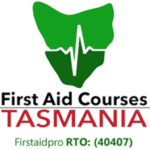The most effective way to attract and retain competent workers is to ensure workplace safety for everyone.
Commitment and awareness are two key components that contribute to a successful and safe work environment. These are often demonstrated throughout the organisation by observing guidelines and providing first aid training to employees.
What Is The Purpose Of Health And Safety?
Health and safety guidelines are put in place to protect the workers, customers, sub-contractors, and members of the general public.
All workplaces have a duty of care under the Work Health and Safety Act (WHS) 2011, but more than that, it is a good business practice to adhere to all laws relating to safety.
Organisations that disobey the law face the risks of losing staff, higher recruitment costs, lower retention rates, and a decrease in profitability.
Poor health and safety can lead to injury, illness, and even death in worse cases.
Not only these illnesses and injuries can impact workers’ quality of life, but it can also financially destroy the business, impact productivity, and put a stain on the reputation. They can face lawsuits, fines, and imprisonment for breaching workplace regulations, resulting in the loss of business altogether.
All these can be quite difficult for many businesses and organisations to recover from.
Millions of workdays are lost in Australia every year due to workplace-related illness and injuries. Statistics show that it costs the country’s economy at least $61.8 billion total within 15 years.
Workplace safety should be a priority for employers because worker injury or loss is unacceptable.
How To Improve Workplace Safety?
Here are some ways to improve safety in the workplace.
Have A Written Policy
A written policy or guidelines is not only a legal requirement; it can also help in assessing risk in the business. It determines the area to improve on so the management can put measures to control them.
A workplace policy usually contains the general statement on health and safety and entails the key persons responsible for it.
Set Clear And Consistent Expectations
Knowing workers’ expectations is vital for employers to meet and exceed those through proper management and decision making.
The same goes for employers to workers. Set safety goals for the job site and provide transparency for everyone to follow.
Get The Right Equipment
Ensure that all workers have or receive the right equipment to do the job safely and adequately.
It is also best to incorporate the use of signages and equipment training to make sure it is used correctly and reduces the risk of errors.
Regular Self-Inspections
Conduct regular workplace safety inspections looking for any potential risks and hazards.
A clean and organised work environment, by its very nature, is a safer job site. Tools and equipment that are appropriately put away do not cause unfortunate slips, trips, and falls.
Keeping the pathways clean also makes it easier to steer clear of debris and avoid tripping hazards.
Training And Education
Accredited and non-accredited training conducted by supervisors, management, or third-party providers helps workers gain appropriate work knowledge.
When developing workplace programs, allot significant time for training to help build a positive workplace safety culture. These help stop misconceptions regarding the job and instead focus on important things such as educating the individual or group.
Workplace training increases productivity by empowering both workers and employers.
Create A Safe And Healthy Workplace
Creating and fostering the right environment and managing potential sources of harm can benefit everyone at work.
Providing workers with a first aid training course is a great way to ensure workplace safety. It can minimise the risk of injury and illness and ensure that safety policies are embedded across the organisation.
For more information, see the group booking option or email courses@firstaidpro.com.au.








